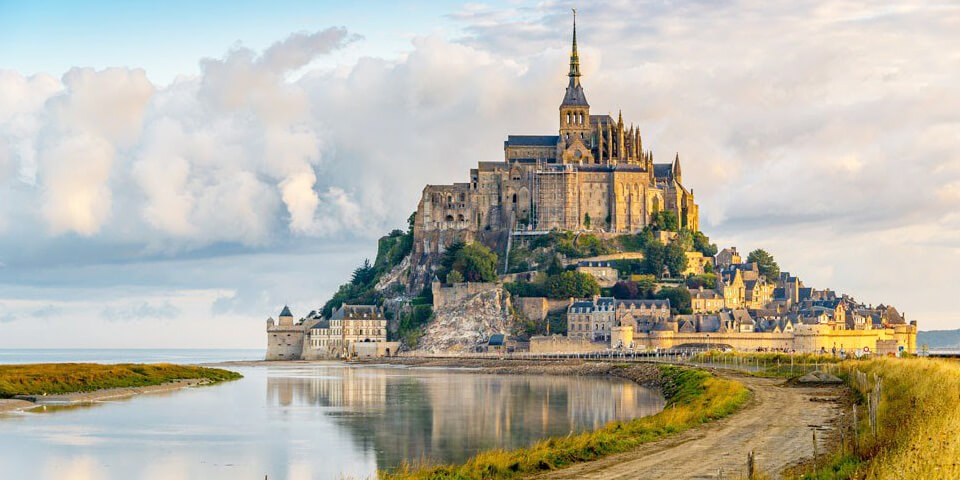Ancient castles of the world
Old castles keep secrets. Majestic, dignified, gloomy and lush, they attract to themselves, promising to show something special. The most ancient castles amaze with their scale and skillful decoration. Man is an infinitely curious creature, which is why thousands and thousands of tourists visit castles around the world every year. They are attracted not only by the desire to look at the life of past years. Everyone is trying to see through the keyhole what the walls of buildings remember. Whose fates were decided in them, what deeds were done?
General characteristics and functions
If we consider these buildings outside of eras, we can distinguish the following features that distinguish old castles:
- Location. Almost all castles are located on hills, which could be both natural and artificial – it all depended on how lucky the owner was with the lands.
- Courtyard. Its existence is due to the need to lead a life and, in which case, to be able to maintain an autonomous existence outside the rest of the world. It included craft workshops, forges, kitchens and other elements designed to equip life as much as possible.
- Main tower (donjon). The heart of the castle. By and large, the donjon was a castle within a castle, as it was located in the safest place and was fortified on all sides. It was the dwelling of the feudal lords, at the same time it included food and weapons depots.

- Fortress walls. They surrounded the courtyard, serving as both protection and an external sign of power. They tried to make them as thick and impregnable as possible.
- Ditch. It surrounded the fortress walls, serving as an additional means of defense against those who really wanted to profit from the contents of the castles. Its presence solved two problems at once: it made it impossible to dig and deprive potential attackers of coming close to the walls. The ditch for constant filling with water was connected to a nearby reservoir. Communication with the outside world was maintained by means of a drawbridge.
- Gates. They were called upon to control the mass movements of people, animals and vehicles.
Locks as a means of protection
The prototypes of these buildings appeared in Iran, later moved to Ancient Rome, after which they advanced to Byzantium, where they became very popular due to the fact that they were used as forts.
However, castles flourished during the Middle Ages, they were used as dwellings of feudal lords and were primarily defensive in nature. It was then that they came to our usual form. The castles were geographically located on steep hills and hills in order to complicate the possible assault as much as possible.
These measures were not connected with the pervasive mania of persecution of the powerful of the world at that time. We must not forget that the Middle Ages passed “under the auspices” of feudal fragmentation and unrest, the protection of life in such conditions was paramount.
Castles as a sign of status
Time passed, customs changed, the Middle Ages with its theological dictates and the need to live, looking back, was replaced by the Renaissance, which elevated anthropocentrism to a cult. Castles from impregnable fortresses naturally turned into simply dwellings of people. The buildings became lighter, more elegant, more beautiful, each one created something of his own, competing with his neighbor to the best of his ability and ability.

Walking through the winding corridors of castles, it is difficult to get rid of the feeling that you are being watched. They keep too many secrets and understatements. Deposed monarchs, corrupt servants, unfortunate love stories – all this excites the imagination and gives goosebumps. Consider some of the secrets of ancient castles?
Mentioned ancient castles with their secrets and ghosts – what comes to mind first? Of course, Tower. This is a London building served as a prison for those that from now on had only one way – to the scaffold. Anne Boleyn, the second wife of Henry the Eighth, did not escape this fate.
The church did not allow him to divorce, and a new love required decisive action. The monarch, who became the prototype of Bluebeard, found a way out – he accused his wife of incest and sentenced to death. Eyewitnesses said that the queen was infinitely calm and majestic, ascending to the chopping block, no tantrums and tears.
In turn, her husband also “mercied” – he provided a skilled French executioner and after Anna’s death, he did not put his head on public display, but buried it, placing it under his right hand. Since then, not only in the Tower, but also on the territory of London itself, a blurry image of a woman in a luxurious dress, holding her head with her right hand, periodically began to be noticed.
